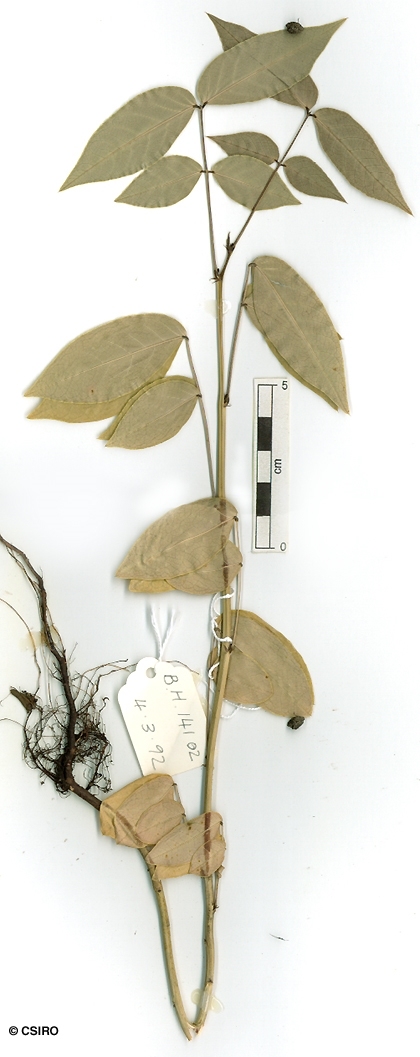Australian Tropical Rainforest Plants - Online edition
Senna occidentalis (L.) Link




Link, J.H.F. (1829) Handbuch zur Erkennung nutzbarsten und am haufigsten vorkommenden Gewachse 2 2: 140.
Weed, Septic; Septic Weed; Senna, Coffee; Coffee Senna; Ant Bush; Negro Coffee
Usually flowers and fruits as a shrub about 1 m tall.
Stipules narrowly triangular, about 2-4 mm long, shed early, leaving only inconspicuous scars. Leaflet blades about 40-70 x 15-25 mm, the terminal pair the largest. About 6-12 leaflets per leaf. Leaflet margins +/- ciliate. A conspicuous raised gland present on the upper surface of the compound leaf petiole shortly above its junction with the twig.
Pods slightly inflated, about 10-12 x 0.8-1.1 cm, septate. Seeds about 5 x 4 mm, +/- olive green in colour, transverse in the pod. Cotyledons 3-veined.
Cotyledons +/- orbicular, about 11-15 x 9-13 mm. First pair of leaves pinnate, each leaf with about four leaflets, apical pair larger than the lower pair. At the tenth leaf stage: leaf pinnate with about 4-6 leaflets, the rhachis ending in an awl-shaped process. Leaflet blades lanceolate, base oblique, apical pair larger than the lower pair. Leaflet blades about 25-50 mm long. Stipules narrowly triangular, about 3-5 mm long. A raised gland present on the upper surface of the compound leaf rhachis at the point of attachment of the basal pair of leaflets. Crushed leaflets emit an unpleasant odour. Seed germination time 6 to 55 days.
An introduced species probably originating in tropical America but now a pantropic weed. naturalised in WA, NT, NEQ, CEQ and central Australia and southwards to north-eastern New South Wales. Altitudinal range in northern Australia from near sea level to 800 m. Usually grows as a weed of agricultural land but also found in disturbed areas in rain forest and monsoon forest.
All parts of this species are poisonous.
This species has been suspected to be toxic and cause scouring but there is no conclusive evidence; it is sometimes toxic to rats in laboratory tests. the seeds have been used as a coffee substitute. Also used in Malaysia for medicinal purposes. Hacker (1990).





